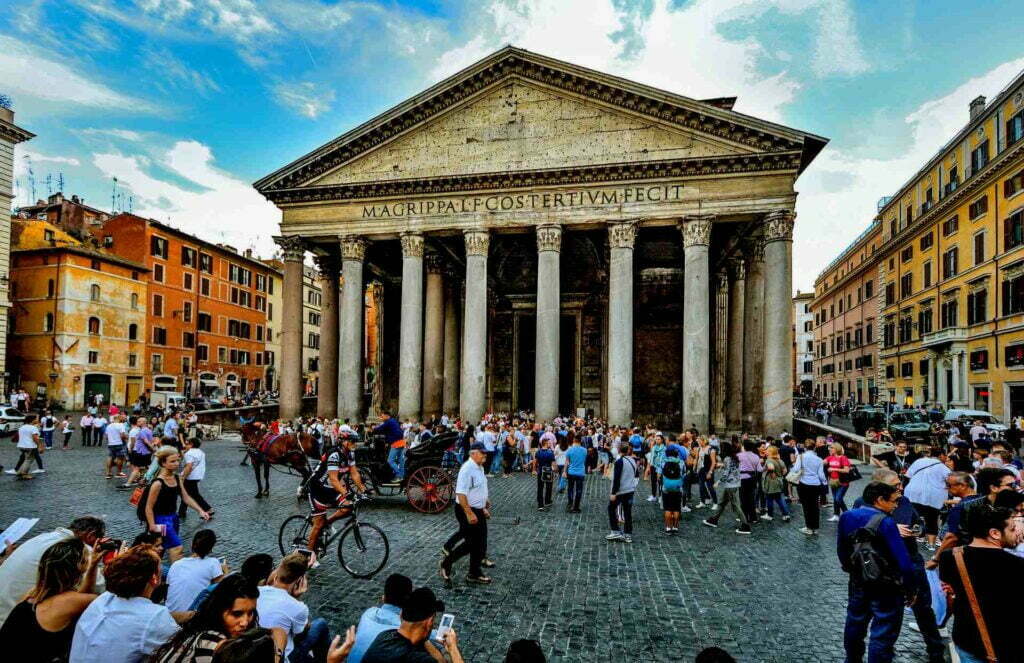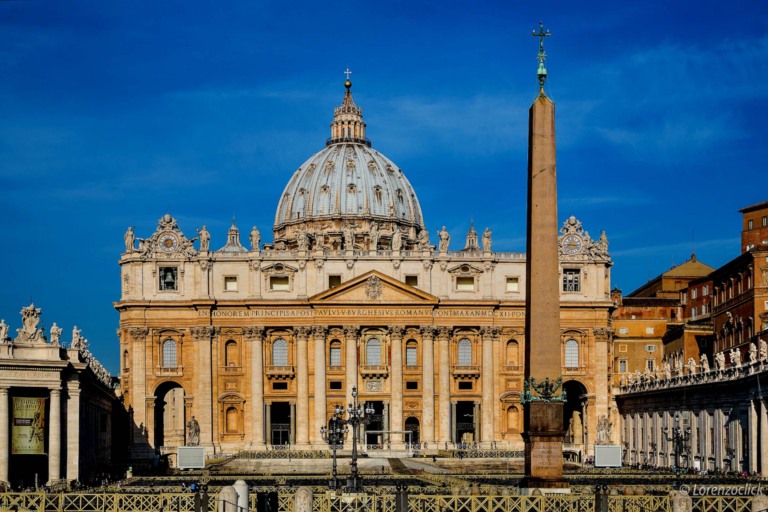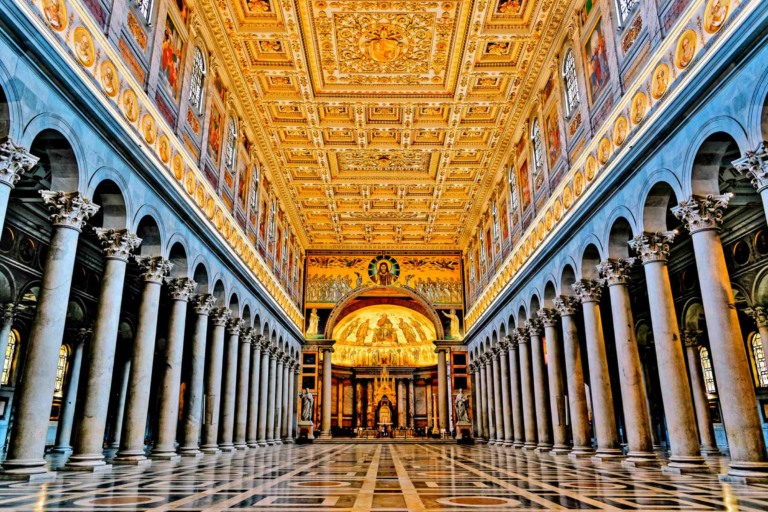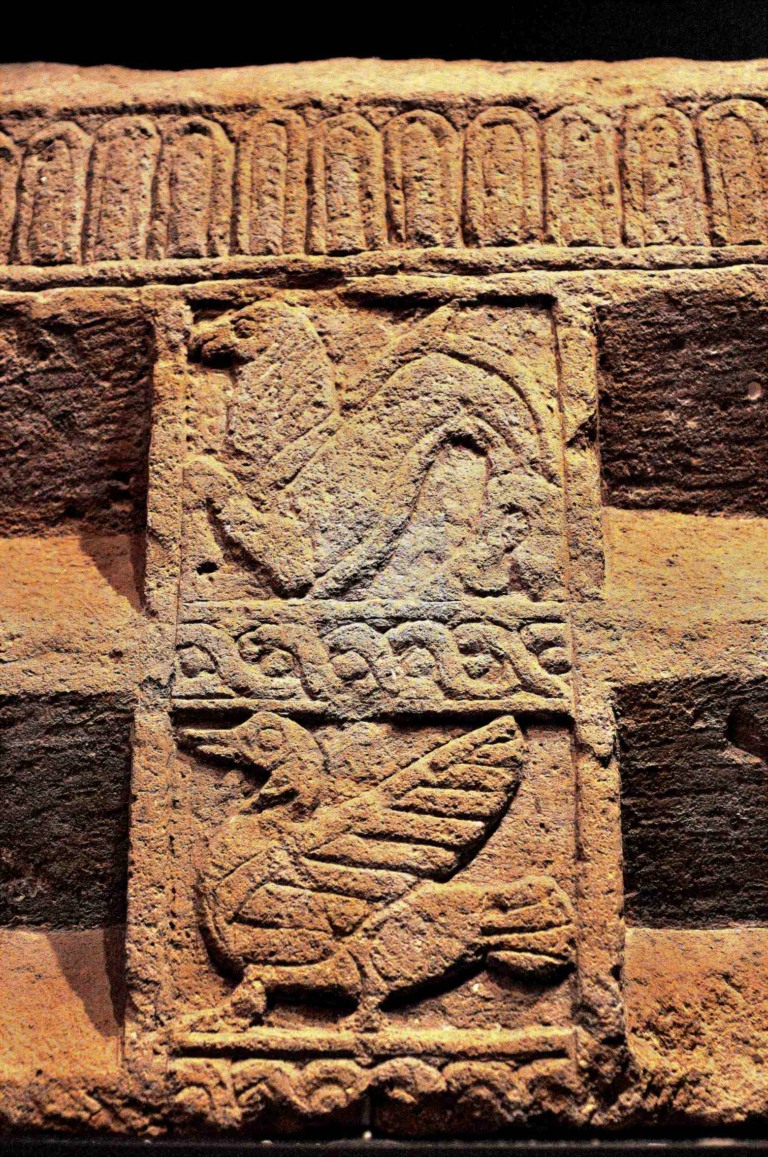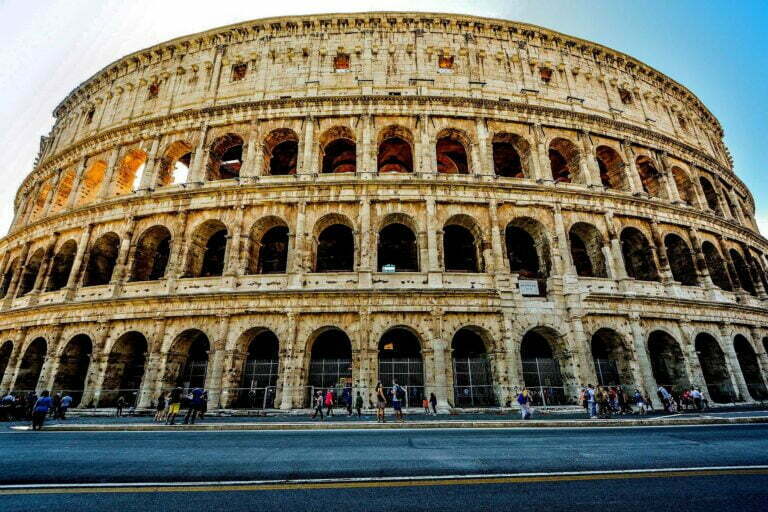The Pantheon in Italy is one of the Roman buildings that has survived the best. The building was finished around 126–128 A.D., during the reign of Emperor Hadrian. At the time it was built, the rotunda of the Pantheon had the largest domed ceiling in the world.
The Pantheon was built on the site of a building with the same name that was there before. Senator Marcus Agrippa built the Pantheon in 25 B.C., and it is thought that it was meant to be a temple for the Roman gods. It has been an extended part of a UNESCO World Heritage Site since 1980.
The Pantheon
Because there aren’t many written records, we don’t know much about the modern Pantheon, like who made it and how long it took to build. The design of the Pantheon has influenced many buildings in Europe and the Americas over time. The Pantheon is still a cathedral and a popular place for tourists to visit.
What is the Pantheon
The Pantheon is a round building made of brick and concrete. It has a large concrete dome that rises up from the walls, a front porch with Corinthian columns, and a gabled roof with a triangular pediment. Under the porch are two huge bronze double doors that are 24 feet (7 meters) high and are the first big examples of this type that we know of.
The current Pantheon was built on the ruins of an older building with the same name. Marcus Agrippa was the son-in-law of Augustus. As the first emperor of Rome, he built it in 25 B.C.
Pantheon Rome Facts
In the past, people thought it was built as a temple to the Roman gods. The name of the building comes from two Greek words that mean “pan,” and “all,” respectively: “theos,” and “gods.” Around the year 80 AD, a fire burned down the first Pantheon. Even though Emperor Domitian fixed it, it burned down again in 110 A.D.
Hadrian became Emperor in the year 117. During that time, parts of what is now Europe, the Middle East, and northern Africa were all part of the Roman Empire. Since art and architecture were important to him, he started a building campaign that lasted until his death in 138.
One of these building projects was a defensive fortress. Hadrian’s Wall marks the northwest edge of the Roman Empire. It is now called Hadrian’s Wall. The wall is 73 miles long and goes from one end of modern-day northern England to the other.
No one knows who made the current Pantheon or what Hadrian’s role was in the project. Evidence shows that the Pantheon was opened between the years 126 and 128 A.D. Even though it’s possible that work started during Trajan’s time in power, from 98 to 117.
Hadrian wrote Marcus Agrippa’s original inscription on the new Pantheon: “Marcus Agrippa the son of Lucius, three times consul, made this” This led to centuries of confusion about where the building came from. No one knows what the Pantheon was used for at first, but Hadrian sometimes held court there.
The Conversion of a Pagan Temple into a Christian Church
In the year 330, Emperor Constantine moved the capital of the Roman Empire from Rome to Byzantium, which is now Istanbul, Turkey. After that, the Pantheon got worse and worse for a long time. In 476, a German warrior named Odoacer took over the western part of the Roman Empire, which included Rome.
The Pantheon kept getting worse and worse over time. In 609, Pope Boniface IV asked the Byzantine emperor Phocas for permission to turn the Pantheon into a Christian church called Sancta Maria ad Martyres. Phocas gave Pope Boniface IV permission. It would be “St. Mary and the Martyrs.” in Latin.
It was the first place in Rome where a pagan temple was changed into a Christian church. Pantheon needed conversion to stay alive. Because the papacy had the money to fix it up and keep it in good shape.
Inside the Pantheon
The Pantheon is mostly made of bricks and concrete, and it is split into three parts. A portico with granite columns leads to a large rotunda with a dome that is connected to the other two parts by a rectangular space.
When it was put up, the domed ceiling was 142 feet across, making it the largest of its kind at the time. At the top of the dome is a hole, or oculus, that is 27 feet wide.
Because the oculus is open, light, rain, and other weather can get into the Pantheon. The walls and floor of the rotunda are made of marble and gold. The roof is a dome with five rings of 28 rectangular coffers.
When Michelangelo saw the Pantheon for the first time, many years after it was built, he is said to have said that it was made by angels, not people. Andrea Palladio, a famous Renaissance architect, and many other architects in Europe and beyond were greatly influenced by the Pantheon.
Monticello, Jefferson’s home near Charlottesville, Virginia, and the Rotunda building at the University of Virginia were both based on the Pantheon. The rotunda of the U.S. Capitol and the rotundas of other state capitals in the U.S. were both based on the Pantheon.
Pantheon Italy
After it became a Christian church, the Pantheon became the final resting place for famous Renaissance people like the painter Raphael, the composer Arcangelo Corelli, and the architect Baldassare Peruzzi.
Several kings and queens are also buried there. One of them is Vittorio Emanuele II, who died in 1878. He was the first king of Italy since the 6th century. Also, King Umberto I was killed in 1900, and his wife, Queen Margherita, died in 1926.
Travelers from all over the world now visit the Pantheon when they are in Rome. There is a Catholic mass there every week, even though it is still used as a church.
